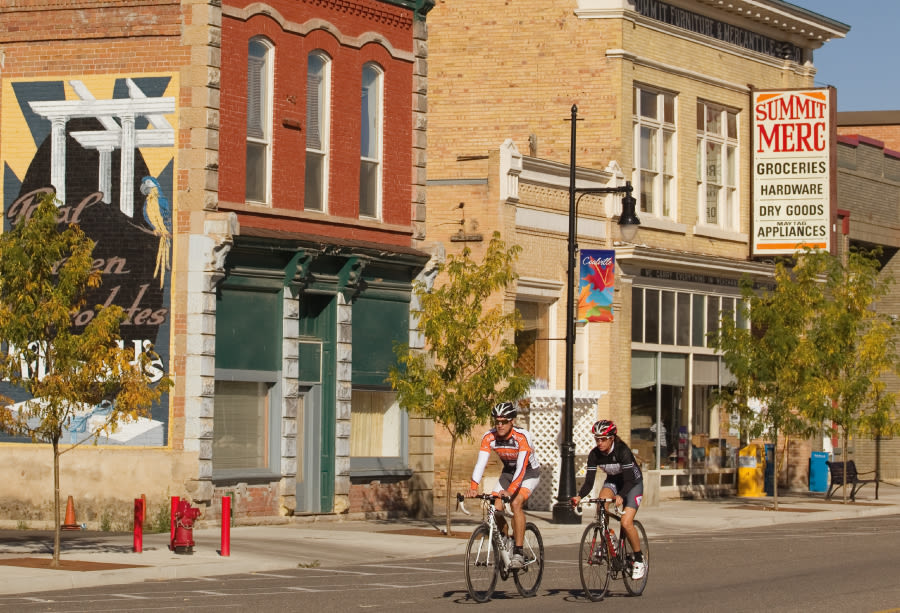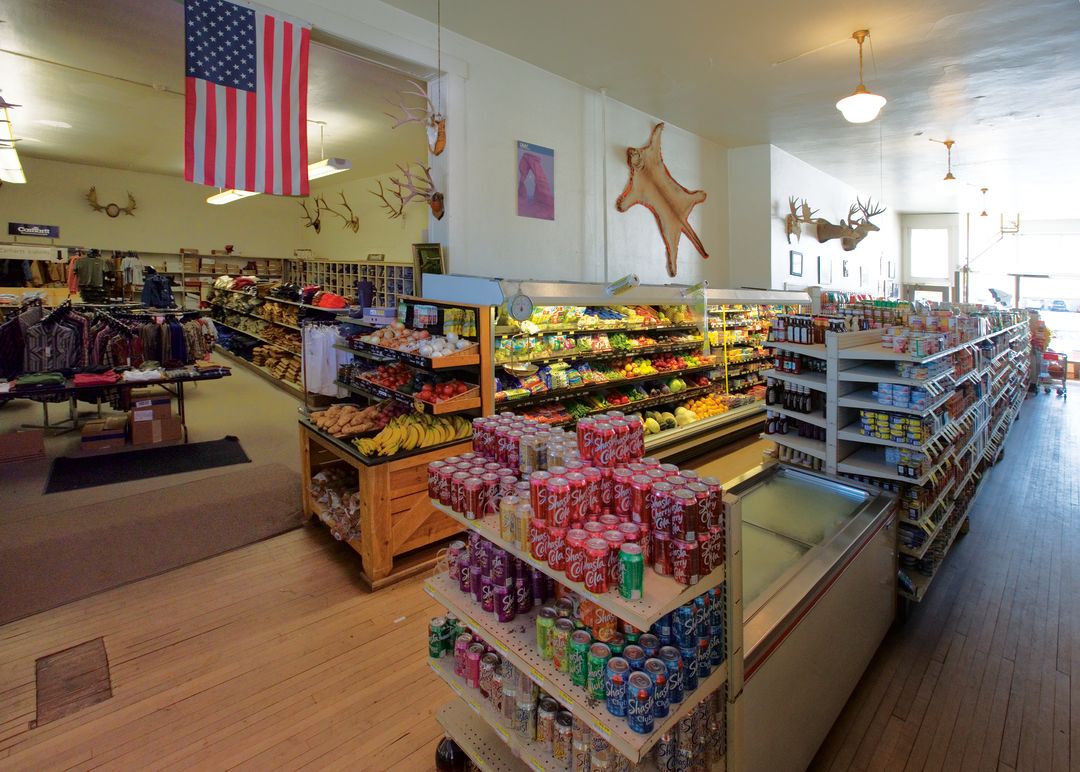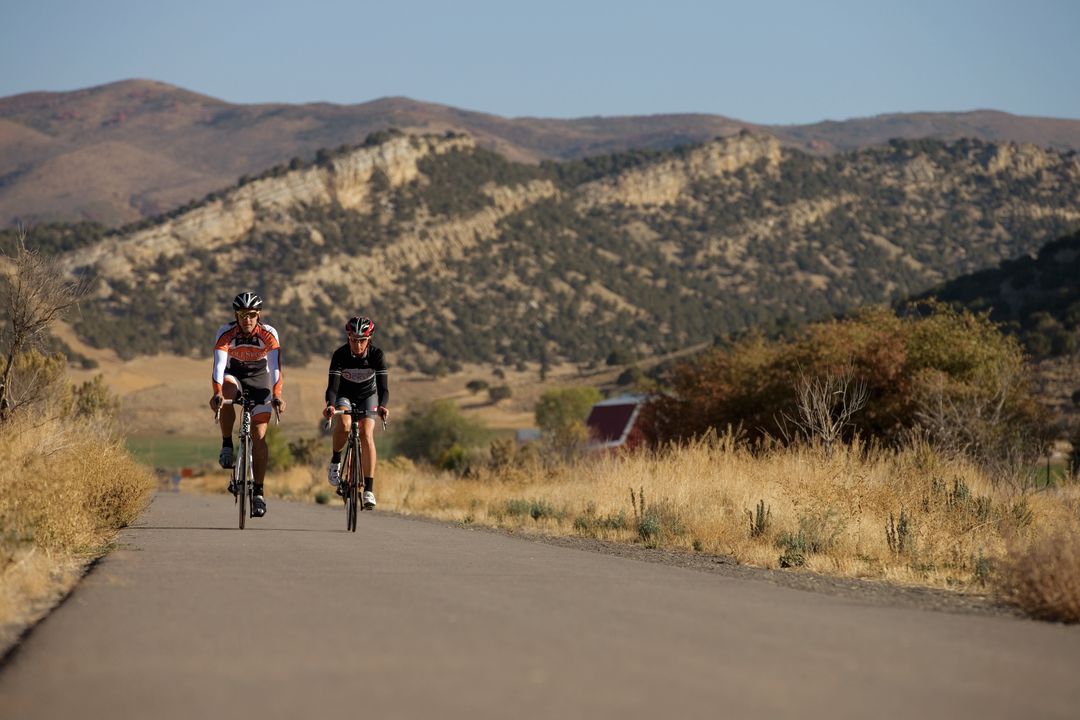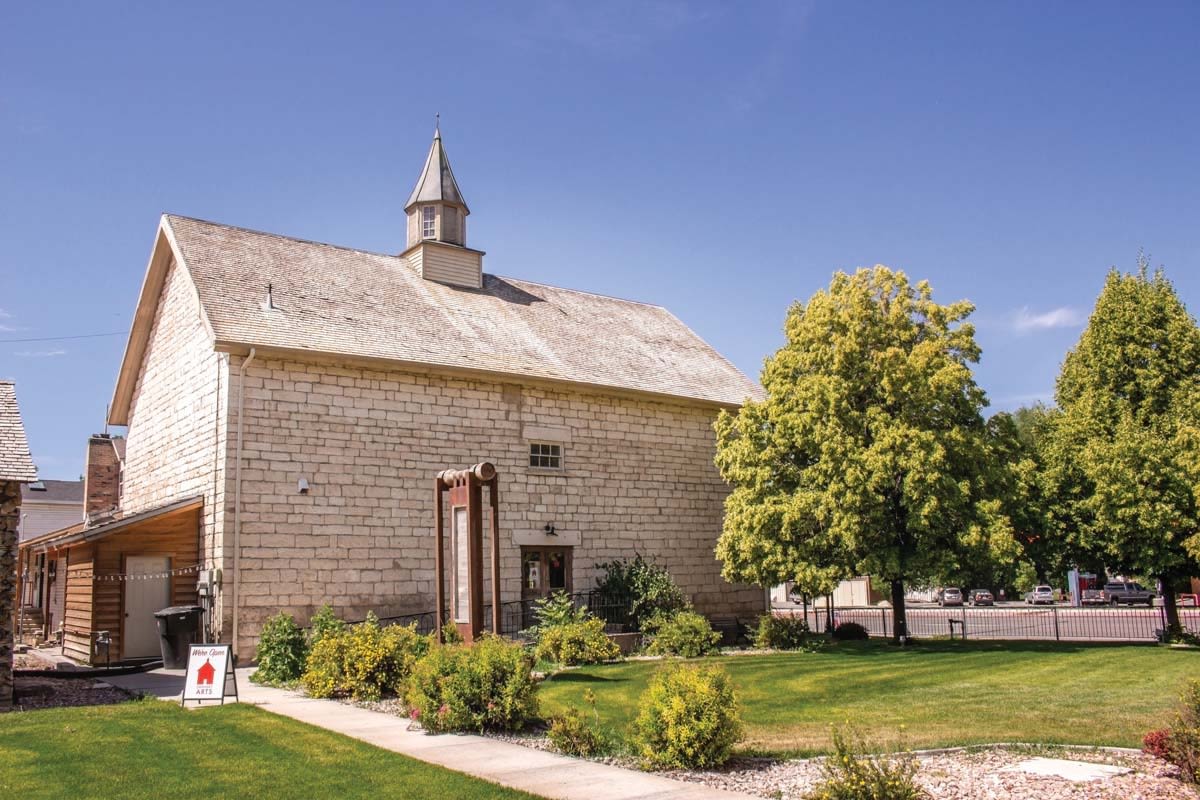Stop By This Charming Western Town

Watching locals stroll the sidewalks of Coalville is nothing short of charming.
People greet one another with a wave, calling out to everyone by name. They inquire about pets, jobs, and family members, then with a nod continue along their way. There are no pretenses, no fake smiles; the interactions are matter-of-fact, and that’s the way people like it. Fierce pride in the enduring spirit of Coalville is a trademark of its longtime residents. As grocer Jim Blonquist says, “I wouldn’t change a thing about this town—and if you ask any other local, they’ll say the same thing.”
Although only a 15-minute drive from Park City, Coalville feels worlds away. As you wind eastbound on I-80, the highway’s three lanes reduce to two, and homes become few and far between. After you go through a small canyon, you see the North Summit Valley emerge across the horizon, with the rambling Weber River flowing toward the Coalville exit.
There are no stoplights in Coalville. At 1,382 people, the city’s population is modest and, as Mayor Duane Schmidt notes, “There are more deer, elk, and other wildlife here than people.” A Subway sandwich franchise recently opened (the only chain store in town), and its appearance has caused a polarizing stir. For a town so close to Salt Lake City, Heber City, and Park City, Coalville has managed to escape the commercial and real estate growth that has exploded throughout the rest of the area. “Coalville has remained grounded in its low-key, Andy-Griffith-Mayberry-like community setting,” Schmidt affirms. “It has not experienced vast development.”
As it has for 100 years, Coalville’s Main Street houses the community’s retail component of shops, restaurants, and service stations. A town staple is the Summit Mercantile, an old-world grocery, butcher, hardware, and Carhartt clothier store. The Blonquist family founded “The Merc” in 1908, and third-generation owners Spug and Jim Blonquist operate the shop just as their family has for over a century. “I’ve worked here since I was 10 years old,” says 60-year-old Jim. “It’s the only paying job I’ve ever had.”
The store is a hub of activity, and not only for shopping: people drop in for canned vegetables or steaks and linger to catch up with other customers. If City Councilman Arlin Judd stops by for a box of cereal, he might end up chatting about the progress of construction on a state-of-the-art, $10 million wastewater treatment facility or the new $1.4 million west-side bridge. Mostly, though, conversation revolves around matters closer to home. “People here are all about raising their families,” notes Judd, who served for 12 years on the local Board of Education.

The century-old Mercantile is a hub of commerce and community activity.
Image: Mark Maziarz
However important it is to residents to sustain their quaint way of life, Judd, like many other community members, recognizes the necessity of stimulating growth. “The majority of people who live here work somewhere else,” he observes. As such, the past seven years have seen a commitment to improving the general integrity of the town’s public works, infrastructure, and aesthetics. The new Pocket Park, north of Bella’s Hair Salon, was built to give residents and visitors a spot to relax, eat lunch, and take photos. Main Street’s beautification has included new asphalt, benches, trees, and street art. Perhaps the most distinctive aspect of these efforts is that the majority of the funding for them—an impressive $25 million—has come from grants. Mayor Schmidt emphasizes that no matter how ambitious improvement projects may become, preserving the community’s agricultural heritage by seamlessly mixing the old infrastructure with the new will remain a priority. The barnlike buildings for the new wastewater treatment plant, for example, are designed to coexist with the valley’s environment.
Coalville’s efforts to conserve its heritage draw on a rich and lengthy history, the threads of which are still vibrant throughout the town. NaVee Vernon, the great-great-granddaughter of Coalville’s founder, freighter William Henderson Smith, is the town’s resident historian. “I am grateful for the sacrifice of those who came before me,” she says, “for my descendants and for others who gave service.”
Early pioneers in Chalk Creek (Coalville’s original name) faced hard winters, and it wasn’t until a nearby coal vein was discovered that the settlement changed its name and began attracting earnest miners. Although several railroad lines were started, the most prominent company, Union Pacific Railroad, constructed a railway from Echo to Park City via Coalville so that coal from the eastern settlements could fuel pumps needed for silver mining in Park City. This rail corridor, a 30-mile thread that winds through wetland meadows, over valleys, along mountains, and across rivers, still exists, although Union Pacific abandoned the route in 1989. Utah’s Division of Parks and Recreation launched an initiative to turn the route into a nonmotorized trail, and today the path is one of Utah’s most distinctive state parks, bringing visitors through Coalville by way of biking, hiking, cross-country skiing, and horseback riding.

Originally a Union Pacific railway, the Rail Trail runs 30 miles from Echo Resevoir to Park City.
Image: Mark Maziarz
While a main attraction, the Rail Trail is not the only good time to be had in town. Locals and visitors alike enjoy activities that take advantage of Coalville’s countryside and proximity to the Uinta Mountains. A casual stroll or snowshoe outing might result in bald eagle sightings. The Echo Reservoir and Weber River are ideal for boating, fishing, swimming, and rafting in summer, and ice fishing and skating in winter. For those seeking an adrenaline boost, higher-velocity activities include cliff jumping, paragliding, rock climbing, hunting, snowmobiling, and ATVing. City-sponsored events, such as the Friday-night film series, the Coalville City BBQ Bash, and the Supercruise (in its 23rd year), are always fun and always free.
As for indoor activities, the Summit County History Museum, located in the basement of Coalville’s courthouse, creatively exhibits artifacts and reveals stories of generations past. However, if karaoke, live music, bar food, and lively company sound more enticing, Bunny’s, a biker bar on Main Street, is the place to be.
“We’re a people-friendly bar,” declares owner Andrea Hewson, a resident who is also on the city council. “You can’t leave without feeling like a member of our family.” Bunny’s has been around for almost as long as The Merc—nearly 100 years—and “it’s historic, to us anyway,” Hewson says. “Everyone’s been here at least once, even if they don’t admit it!” The bar’s biggest event, Caesar Boswell’s Devil’s Slide Ride in September, features a pig roast and a huge crowd, but, at Bunny’s, any night could turn into an adventure.
It’s been that way for decades, fitting for a charming town where things seem to operate just as they always have. For this reason, Coalville’s way of life has been described by some as bucolic. “Bucolic implies ‘unchanged,’ and at first I was offended by that,” Mayor Schmidt explains. “But I have come to the realization that this is a big piece of what makes our community unique and special. I now think that word describes Coalville and its people perfectly. We’re about preserving the simple pleasures.”

































